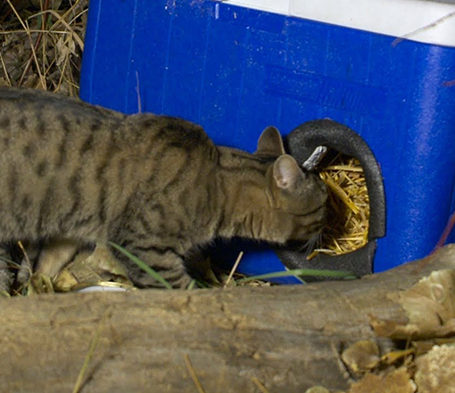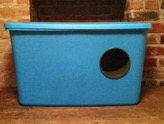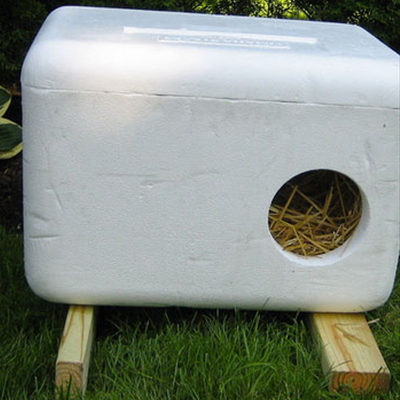Helping outdoor cats through the winter…

How you can help outdoor community cats get through the winter…
Do you know of a colony of cats that live outside fending for themselves? Unfortunately, due to the lack of spaying and neutering and the rapid reproduction rate of cats, feral (or stray) community cats are very common in many communities. With winter coming, it is a very tough time for these outdoor cats. If you would like to help out some cats in your area, here are some winter cat shelter ideas you can share.
Use what you have or is around your community
- Old (or new) foam cooler bins can be repurposed into easy and inexpensive winter shelters for the colony of outdoor cats in your community. The cooler is waterproof and insulated. The thick walls usually meant to keep what is inside cold can also keep what is inside warm! These bins are generally used to ship perishable food, medical supplies, etc. Restaurants and health centres often end up throwing them away, so ask them to save the boxes for you – or just pick them when they are available.
- Hard sided coolers may be a bit harder to come by but if you can get one they are fantastic too.
- Rubbermaid bins – one bin inside of another will create an air insulation barrier.



All these shelters need to be weighed down by a large rock or stone, something to keep it from being blown away in high wind or moved by predators.
DOORWAYS
For each of these types of homemade shelters, make sure the “doorway” is small and cat sized (not raccoon or dog head size) so they can squeeze in snugly but it is hard for predators to get in. Cats don’t need a very large opening – only about 6 inches in diameter. A smaller opening also helps to keep more heat in.
Cutting the doorway several inches above the bottom also keeps the weather out – rain won’t splash up and in from the ground, and snow is less likely to block the door. However, remember, if there is a significant snowfall, it’s possible you might need to shovel out the doorway so the cats do not get trapped inside.
If the edges of your doorway are rough, you can use duct tape to smooth out the ridges.
Putting a cover, or flap, over the doorway of your shelter will help keep cold air out and warm air in. However, DO NOT do this until the cats have gotten used to going in and out, otherwise it may deter them from going in. Any piece of heavy vinyl or rubber, about the consistency of a car floor mat, will work. The material has to be thick enough to provide some insulation but light enough for the cats to easily pull or push it open. You will need to drill two holes through the rubber and above the doorway and insert plastic nuts and bolts, like the kind used to attach toilet seats to toilets to have it hinge easily back and forth. You can use duct tape to put it on but it won’t last long term.
INTERIOR INSULATION
Avoid blankets and towels, folded newspaper, etc. These are not great for insulation and they can stay wet if they get wet. You need something loose and dry to provide insulation. Straw (NOT hay) repels the moisture and makes it ideal for cats to stay warm and dry but not everyone has access to it. Another alternative is shredded newspaper.
NOW YOU HAVE SOME IDEAS ON HOW TO MAKE A SHELTER, BUT, WHERE YOU PLACE IT IS IMPORTANT TO CONSIDER…
- Place them near where you know they are already hanging out and under or against something (not out in the open) so they feel protected
- Place two shelters with the doorways facing each other (about 1 ½ feet apart) and put a large board on top of both shelters. Place a rock or bricks, something heavy, on top to weigh the shelters down.
- Place the shelter up off the cold ground to make it more effective for cats to warm the inside with their body heat. Make sure there is solid footings or base so it doesn’t tip around when the cats try to go in. Put them on pallets, wood base or bricks to raise them up. To keep it even warmer, you can place straw underneath.
- Safety from predators (including unleashed dogs) is critical when deciding where to place the shelter. Face the entrance close enough to a wall or another shelter so only the cats can get in and out.
Here is a great video link on some other great ideas for cooler shelters, thanks for caring for the cats and keeping them warmer!





